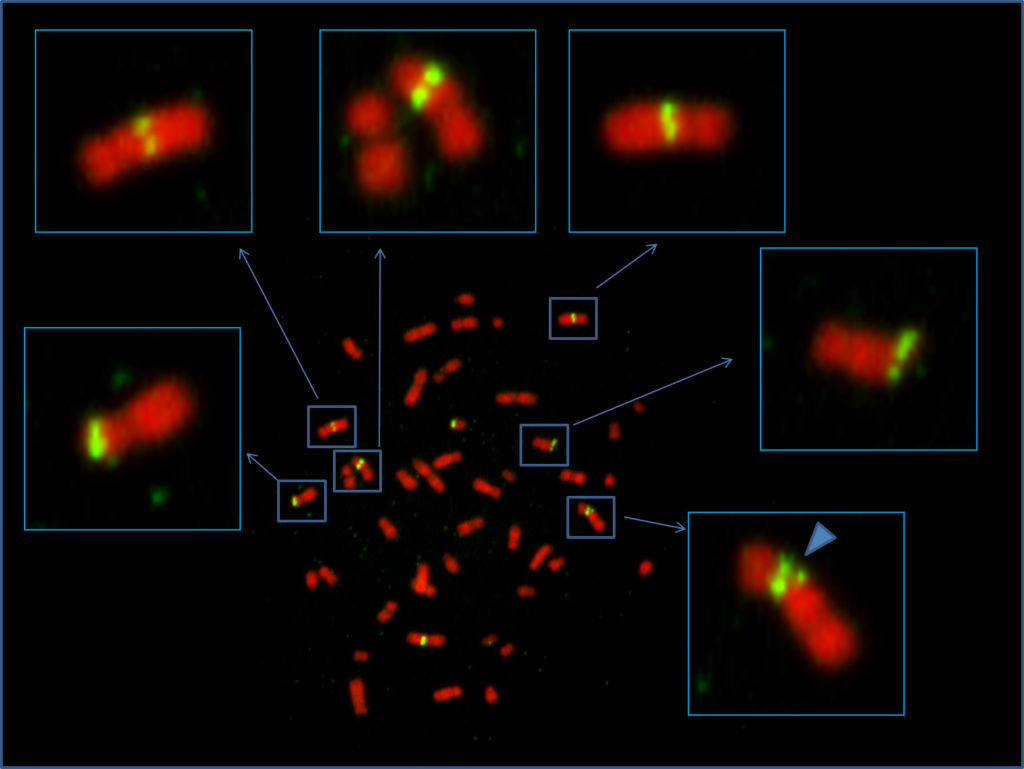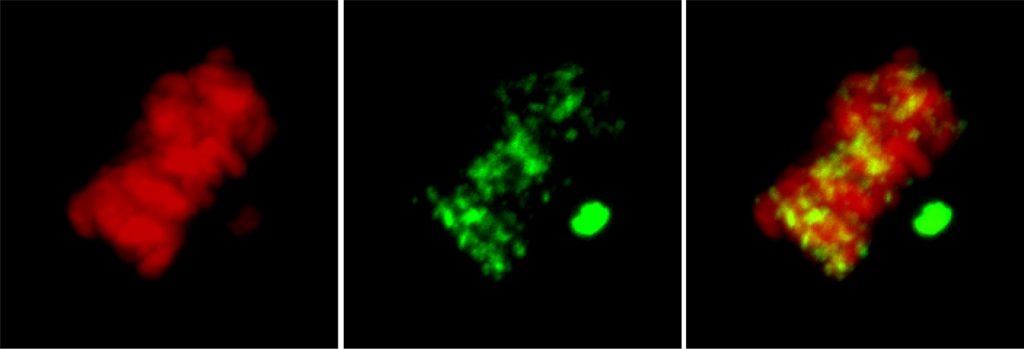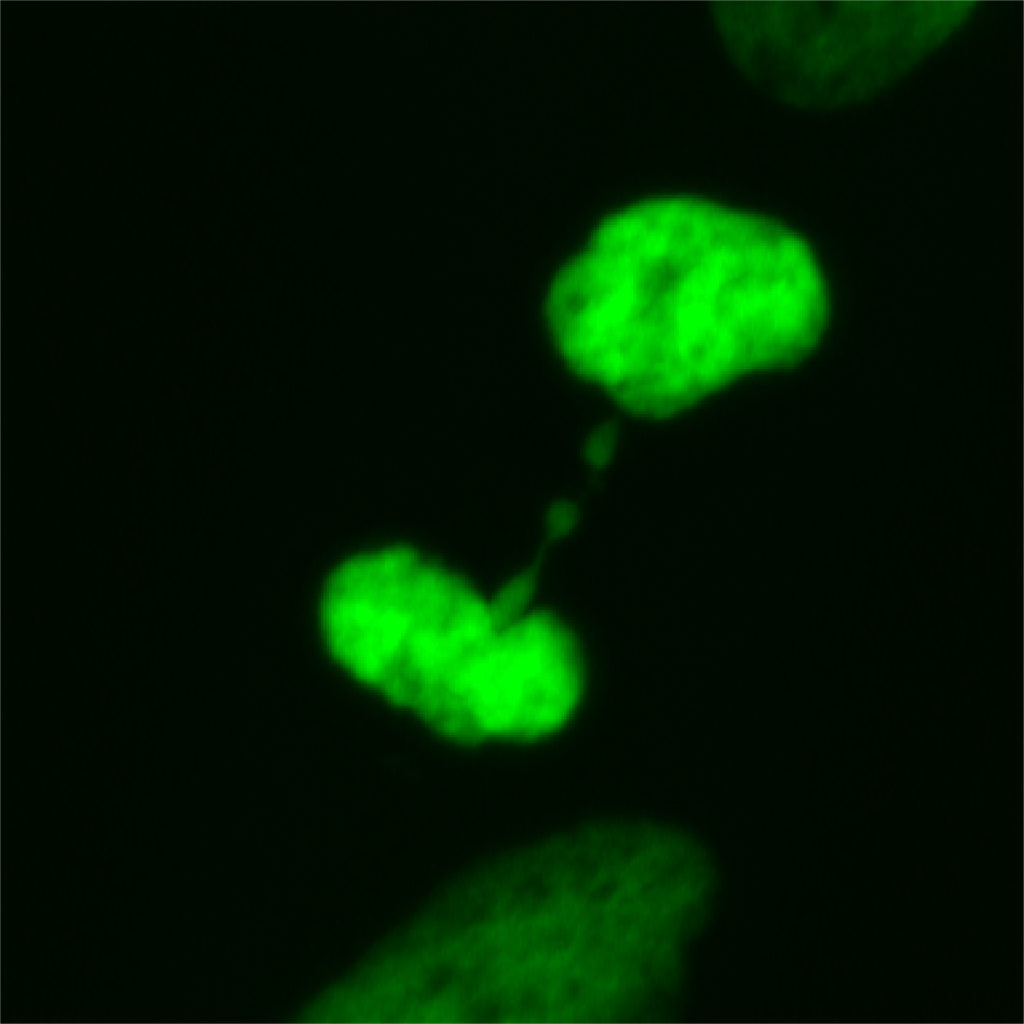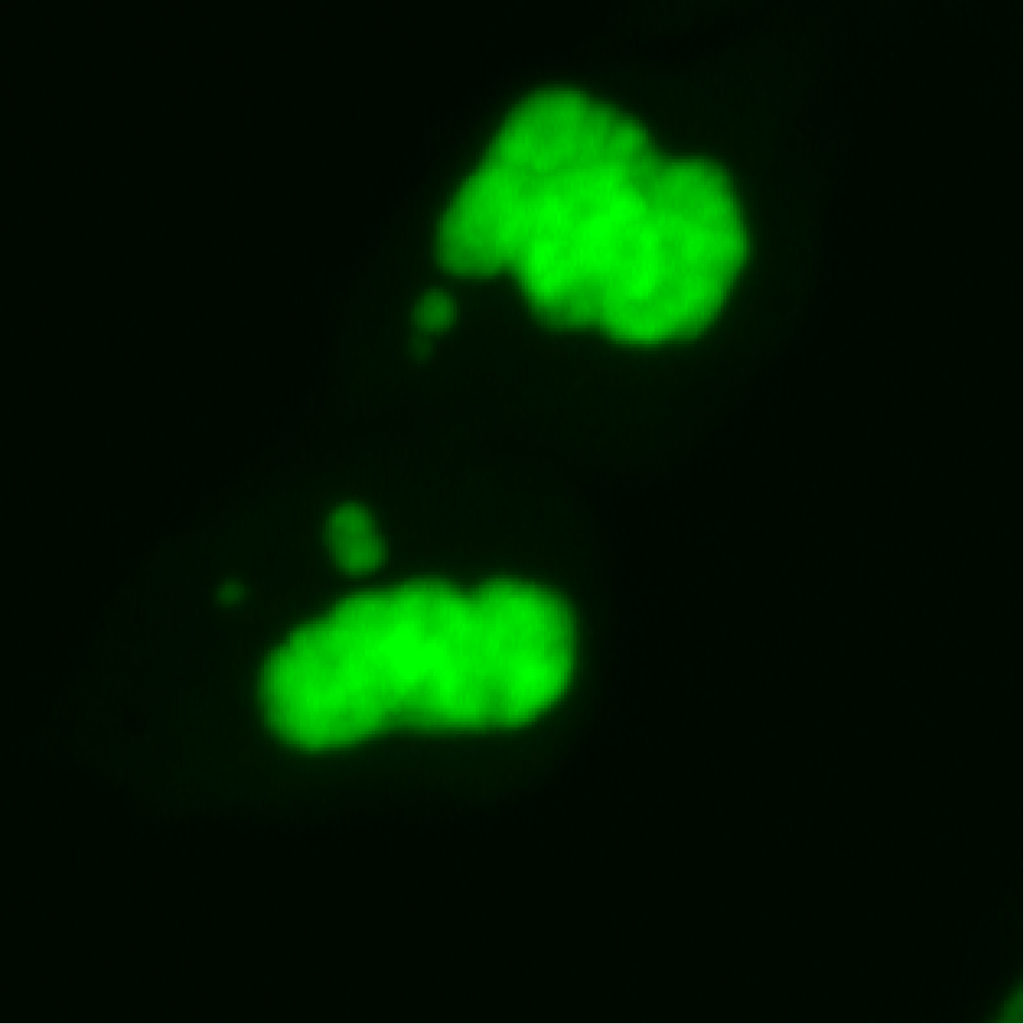At the Cell Cycle and Genomic Stability Laboratory at Fundación Instituto Leloir (Argentina), Dr. Vanesa Gottifredi works under the hypothesis that DNA replication is a valid target for cancer therapy.
DNA is essential for our development, survival and reproduction. However, DNA is constantly undergoing damage from a variety of factors, including byproducts of our metabolism, environmental factors such as UV radiation from the sun and its own replication during cell division. The DNA damage response (DDR) is a collection of cell pathways that can repair DNA damage. However, mutations in the DDR can allow cancerous cells to survive despite DNA damage that is caused by treatments such as chemotherapy.
Dr. Gottifredi (above left) and her colleagues, Nicolás Calzetta (above center) and Dr. Marina González Besteiro (above right) recently published an article where they used confocal microscopy to study the protein checkpoint kinase 1 (Chk1), which is a key mediator of DDR, and its potential role in cancer therapies. Here Dr. Gottifredi shares some thoughts about her research, their recent publication and use of microscopy.
What are your research goals?
Cancer cells have a strong drive to undergo constant division and growth. This creates a window of opportunity for treatment; if the DNA is sufficiently impaired by chemotherapy it can trigger cell death in cells attempting to divide.
But decades of chemotherapy usage on cancer patients have revealed that such a treatment is not as successful as initially expected. Unfortunately, cancer cells can hijack the DDR to complete DNA replication, survive and adapt to chemotherapy.
Our laboratory’s primary goal is to identify the specific contributors to cancer cell survival and chromosome instability in the DDR network. We hope to identify druggable targets that selectively sensitize cancer cells to cell death and/or regulate chromosome instability.


HCT116 metaphase spread undergoing mitotic DNA replication. EdU incorporation is visualized in green and corresponds to chromosomes undergoing mitotic DNA replication. The blue arrow indicates a DAPI-negative break located at a site of EdU incorporation. The image was acquired with a ZEISS confocal microscope and processed with ZEISS ZEN software.
What did you demonstrate in your recent publication?
A goal of our research is to find tools that prevent chromosome instability during cancer treatment. During the last decade, it has become evident that chromosome instability is a relevant source of cancer genesis and resistance to therapies. Both chemotherapy and DDR inhibition cause cell death but increase chromosome instability in the surviving population. Hence, while the treatment of choice may efficiently reduce the cancer cell load, it may also prompt genetic changes in the surviving remnants, facilitating the acquisition of resistance to the treatment. For a long time, we wondered whether the DDR could be manipulated to induce chromosome instability-independent cell death.
In this manuscript, we demonstrated when Chk1 (a key mediator protein of DDR) is depleted, chromosome instability and cell death are dissectible at the molecular level. The implications are that chromosome instability can be repressed without losing the cell killing efficiency of Chk1 depletion. We also show that aberrant DNA synthesis in M-phase of the cell cycle triggers chromosome instability, which can be reverted by adding extra nucleosides.
How did confocal microscopy support your research?
Microscopy was instrumental to our publication because our research requires high-resolution images of mitotic cells.
Considering that mitotic cells have a round shape, the z-stack function of the ZEISS confocal microscope allowed us to build highly defined images of mitotic DNA decorated with antibodies against different proteins at specific sites (foci), for example, as shown when using a DNA damage marker of broken DNA, γH2AX.

Mitotic U2OS cell with γH2AX foci. γH2AX foci (green) in M phase are markers of mitotic double strand breaks. Images were acquired with a ZEISS confocal microscope and maximum intensity projections were generated using ZEISS ZEN software
Another type of defect that we monitored using this technology was the accumulation of thin tracks of under-replicated DNA at late mitosis, known as ultra-fine bridges. Because of their low DNA content, such regions are not detectable by DAPI or other standard DNA dyes. Instead, they can be detected by revealing the translocase PICH, which coats such under-replicated DNA tracks. Because ultra-fine bridges in mitosis indicate a cell’s failure in completing DNA replication, these results were crucial for building our manuscript’s model.

PICH-positive ultra-fine bridges (green) reveal under-replicated DNA in mitosis in U2OS cell. Images were acquired with a ZEISS confocal microscope and processed with ZEISS ZEN software.
Finally, only by using such a high-quality confocal microscope could we directly visualize broken DNA at sites of nucleotide incorporation in metaphase chromosomes. So microscopy was the tool that gave us the confidence to conclude that DNA breaks while it is being synthesized during mitosis. This conclusion is one of our manuscript’s main contributions to the DNA replication field.

Mitotic U2OS cells undergoing DNA synthesis revealed by means of EdU incorporation and staining. Regions of DNA synthesis are revealed by EdU foci (red). Image acquired with a ZEISS confocal microscope and maximum intensity projections were generated with ZEISS ZEN software.
Learn More
Read the full article “Mus81-Eme1–dependent aberrant processing of DNA replication intermediates in mitosis impairs genome integrity” Link
Learn more about ZEISS confocal microscopy solutions.







